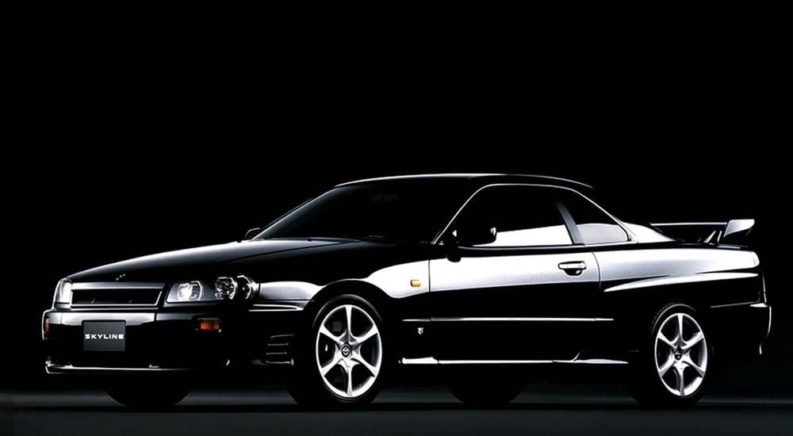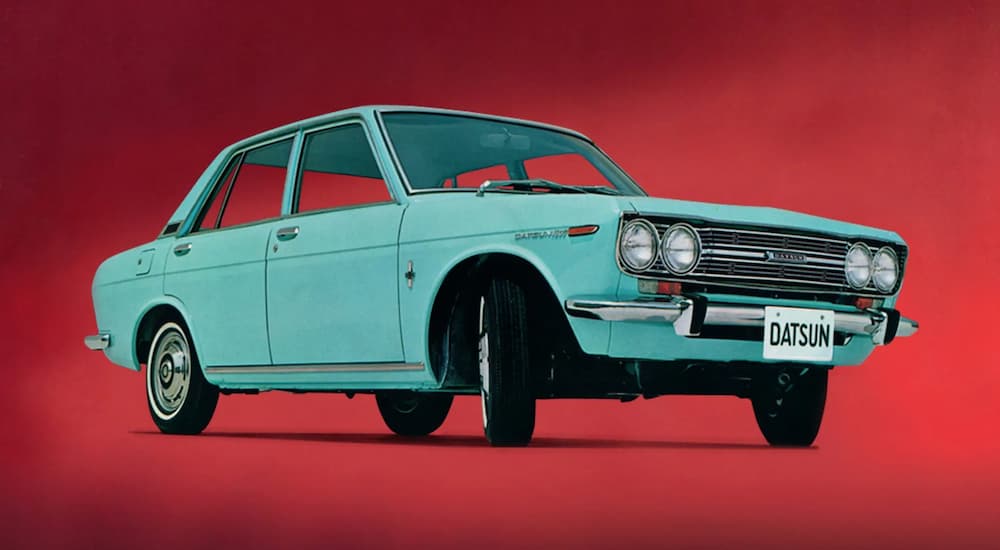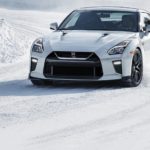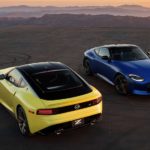There are some wacky driving laws in the United States. For example, in Little Rock, Arkansas, it’s illegal to honk your horn after 9 PM at a site that serves cold drinks or sandwiches. Drivers in Oklahoma are legally encouraged to tether their vehicles when parked outside public buildings. Massachusetts forbids drivers to go anywhere with a gorilla in their backseat. And in some cases, you simply aren’t allowed to drive the vehicle you want, which is how we’ve ended up with this list of Nissan cars we never got in the US, but need.
It’s true: you can go to any Nissan dealer in the country looking for these models, but your search will turn up unsuccessful. Why were these particular vehicles banned? In many cases, it has to do with import laws and taxation practices. Other factors include US emissions and safety requirements, while others simply didn’t make the cut due to what the market wanted and needed at the time.
In each case, however, there’s definitely a public appetite to just check out these regal beauties that appear in other markets around the world. Feast your eyes on some of the Forbidden Nissans of our time.
Nissan Skyline GT-R
If the name sounds familiar, it’s not just you––the Nissan GT-R has been available in the United States since 2008. In fact, the 2021 GT-R Nismo is practically a legend, with its 600 horses and unique carbon fiber body features. But historically speaking, Americans have not had access to the car that started the craze––the Skyline GT-R. Is it because the Skyline was too fast and too furious?
It actually seems that the Skyline GT-R took a more circuitous path from family vehicle to idolized street racer of the 1990s. The very first Skyline was created in 1957 by the Prince Motor Company. At first, the Skyline was offered as a station wagon or a sedan. The racing version made its way into this world in 1964, and Prince Motors merged with Nissan in 1966. The first generation of the official Nissan Skyline GT-R debuted in 1969.
The early Nissan Skyline models included an inline-four or inline-six engine, but the GT-R versions went in for ultimate power, using a racing-inspired four-valve dual overhead cam engine and equipping the vehicle with four-wheel independent suspension. This little vehicle managed to sweep Japanese touring races, with over 50 wins in its first three years of racing.
Many experts feel that the 1989 R32 Skyline GT-R is the vehicle that set the bar for today’s GT-R performance. Featuring all-wheel drive and a 280 hp twin-turbo inline-six engine, the R32 is still a name that is whispered reverently in performance communities. Best of all, this model is now over 25 years old, which means it can now be legally imported into the States. You just have to find someone in Japan who’s ready to part with theirs. Good luck.
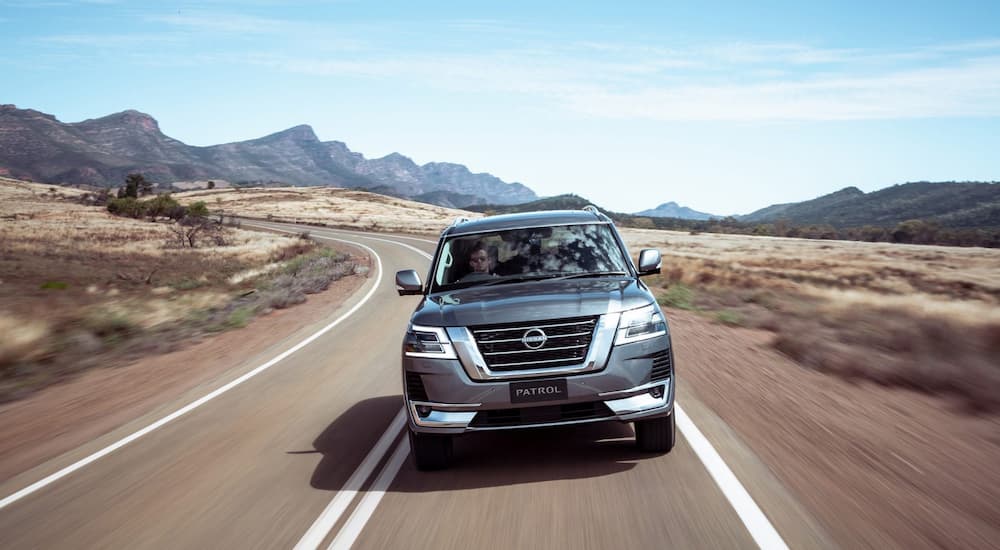
Nissan Patrol
On paper, the Nissan Patrol is available in the US under the more magnificent moniker of the Nissan Armada and is also known as the Infiniti QX80. All three models do, in fact, share a platform, but many experts will confirm that they are simply not the same thing.
For starters, the Armada is a luxury-built vehicle with top-shelf features like fine quilted leather upholstery across its three-row interior and a tech-forward cockpit. The current Patrol is quite nice, with a leather and wood interior, but it’s also equipped for off-roading with an array of low and high four-wheel drive settings. While they could pass as twins, it’s clear that the two vehicles have very different personalities.
The Patrol originated from the post-World War II Jeeps used throughout Japan––in fact, the first version was known as the Nissan Jeep. Making a brief US debut from 1960 to 1969, these vehicles were small, agile, practically bullet-proof, and very similar to the Toyota Land Cruiser and Willy’s Jeep. While the American public loved the other two, the Nissan Patrol found its fans elsewhere.
In fact, it’s pretty much one of the OGs of off-roading outside the US. A Nissan Patrol––the 60-Series, to be precise––was the first vehicle to cross the Simpson Desert of Australia. Its first gear was so low that it could climb hills when idling, and the Patrol made such an impression on the public that the second generation continued through 1980, when the 160-Series took things to the next level.
In theory, the Armada can be equipped with available Intelligent 4×4 technology and selectable drive modes, and it’s certainly an enjoyable and capable eight-passenger SUV. But there are probably plenty of drivers who are stuck on the part about climbing sand dunes in idle. It’s a very specific type of fun.
Nissan Pulsar
The Pulsar not only has a cool name, but it looks like it would be a lot of fun, too. Since 1978, the Pulsar has come in several different shapes and sizes. The most recent version, sold in Europe from 2014 to 2018, is a hatchback designed to take on the Volkswagen Golf. By all accounts, it’s quick, nimble, offers a diesel option, and has enough space to make it a reasonable selection as an in-town family car. At least, so we’ve heard. They weren’t available in the US.
The Pulsar’s early ancestor, the Datsun 310, was offered in the US in a limited run that only included the three-door coupe and five-door hatchback versions, strictly equipped with a manual transmission. It didn’t sell very well and disappeared from North America after the 1983 model year.
If the name “Nissan Pulsar” is really ringing a bell for you, you might be one of the few drivers fortunate enough to remember the Pulsar NX. This particular vehicle, designed in California and offered in small quantities in the 1980s, is best known for the Sportbak concept. This idea allowed drivers to reconfigure their vehicle with a rear canopy in the place of a solid trunk or rear door. Essentially, you could turn your coupe into a hatchback or a station wagon based on how the canopy was installed. In fact, you could leave the canopy off completely and drive around in a wagon/truck open bed kind of concept.
Oddly enough, the Sportbak concept didn’t take off, but the Pulsar became a fan favorite everywhere but in the US. Mutterings have been heard about turning the Pulsar into a small crossover EUV, but as with many rumors in the automotive world, there is a large gap between concept and reality.
Nissan, the Law, and You
The National Highway Traffic Safety Administration issued the 25 Year Rule in 1988, which more or less makes it impossible and illegal to import a vehicle unless it has reached “collectible” status, which is defined as being over 25 years old. Just like any other commodity, some people have tried attempting to import a Forbidden Nissan into the US. However, it’s not a great idea.
First, you have to find accomplices. That means locating someone willing to sell to a buyer in the US and a current-day Han Solo to smuggle it to you. You can’t exactly put a Patrol in your pocket and tell customs officers you didn’t know it was there, either.
There are exceptions for track-only use and “Show and Display” use, as well as limited use for those arriving from overseas with their personal vehicle in tow. There was a brief window when gray market experts Motorex managed to get a handful of Skylines to the States.
However, the process for legally acquiring a verboten vehicle is long and costly. And, if you’re caught trying to do your own sneaky import, you’ll likely face a steep fine. Even worse, your ill-gotten auto will be gleefully smashed into a tiny, useless cube for all of the internet to enjoy, thanks to the NHTSA. Therefore, if this list has sparked a mild obsession for you, be sure to mark your calendar early so that you have time to get that 25-year-old Skyline, Patrol, or Pulsar home safely and legally.

